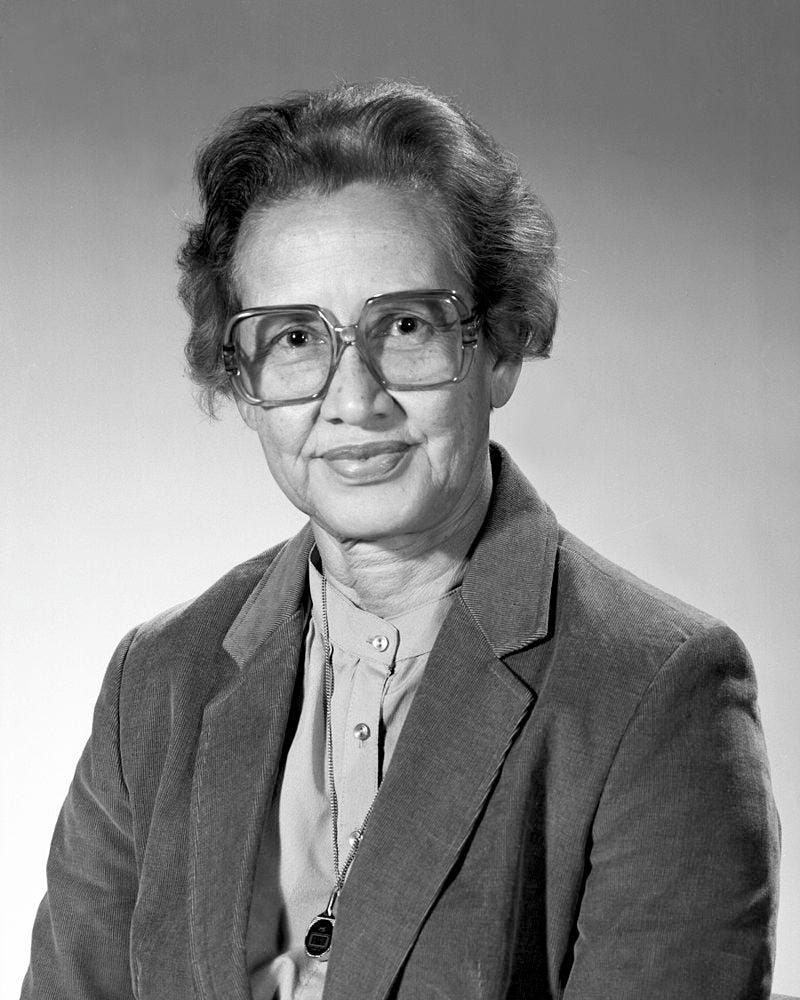Welcome to the One Mic History Newsletter, and thank you for your continued support. Today, we delve into the story of Creola Katherine Johnson. She was an African American NASA mathematician whose calculations for orbital mechanics were critical to the success of the first U.S. crewed spaceflights, as well as subsequent missions.
Born in 1918, Katherine Johnson was an African-American woman who rose above race and gender restrictions of her time to make incredible contributions to the field of space exploration.
Johnson displayed superior mathematical ability early on, She initially joined NASA's precursor, The National Advisory Committee for Aeronautics’ (NACA’s) at Langley laboratory in the summer of 1953. She was stationed at the all-black West Area Computing section. However, Johnson quickly distinguished herself and secured a permanent position in a largely segregated and male-dominated organization.
Her initial contributions at NASA involved analyzing data from flight tests and examining a plane crash caused by wake turbulence. However, Johnson's life and career trajectory changed with the launch of the Soviet satellite, Sputnik in 1957.
In 1958, Johnson played a crucial part in the Notes on Space Technology, an important document outlining a series of lectures by engineers in readiness for space travel. As NACA transformed into NASA, so did Johnson's work. She performed trajectory analysis for America's first human spaceflight, 1961's Freedom 7 mission with astronaut Alan Shepard at the helm.
In 1960, Johnson co-authored the groundbreaking report - Determination of Azimuth Angle at Burnout for Placing a Satellite Over a Selected Earth Position. This report laid out equations for an orbital spaceflight with a specified spacecraft landing position. Suitably, Johnson became the first woman in the Flight Research Division to receive authorial credit for a research report.
In 1962, as NASA prepared for John Glenn's Friendship 7 orbital mission, Johnson was called upon to do the work that she would become most known for. With trust in electronic calculating machines on shaky ground, They were prone to hiccups and blackouts. Glenn asked for Johnson to manually verify the accuracy of the trajectory calculations. Following Johnson's affirmation, John Glenn would remark
“If she says they’re good, then I’m ready to go.”
Glenn's successful flight marked a significant turning point for the United States in the space competition with the Soviet Union.
During her 33-year long career at NASA, Johnson also assisted in syncing Project Apollo’s Lunar Lander with the Lunar orbiting Command and Service Modules, worked on the Space Shuttle program, and the Earth Resources Technology Satellite (later named Landsat).
Beyond the field of space exploration, Johnson's influence extended to the Presidential office. In 2015, at the age of 97, she was honored by President Barack Obama with the Presidential Medal of Freedom, America's highest civilian award.
Though Johnson passed away on February 24, 2020, her pioneering legacy in the field of space exploration continues to reverberate within NASA and beyond. She stands as a testament to determination, intellect, and passion, permanently ingrained in the annals of American space history.
Katherine Johnson is inspiration and an American hero.
Thank you for joining us today. For more engaging stories, visit One Mic History. Your continued support is greatly appreciated, enjoy our latest episode. We love you all.
-Countryboi






